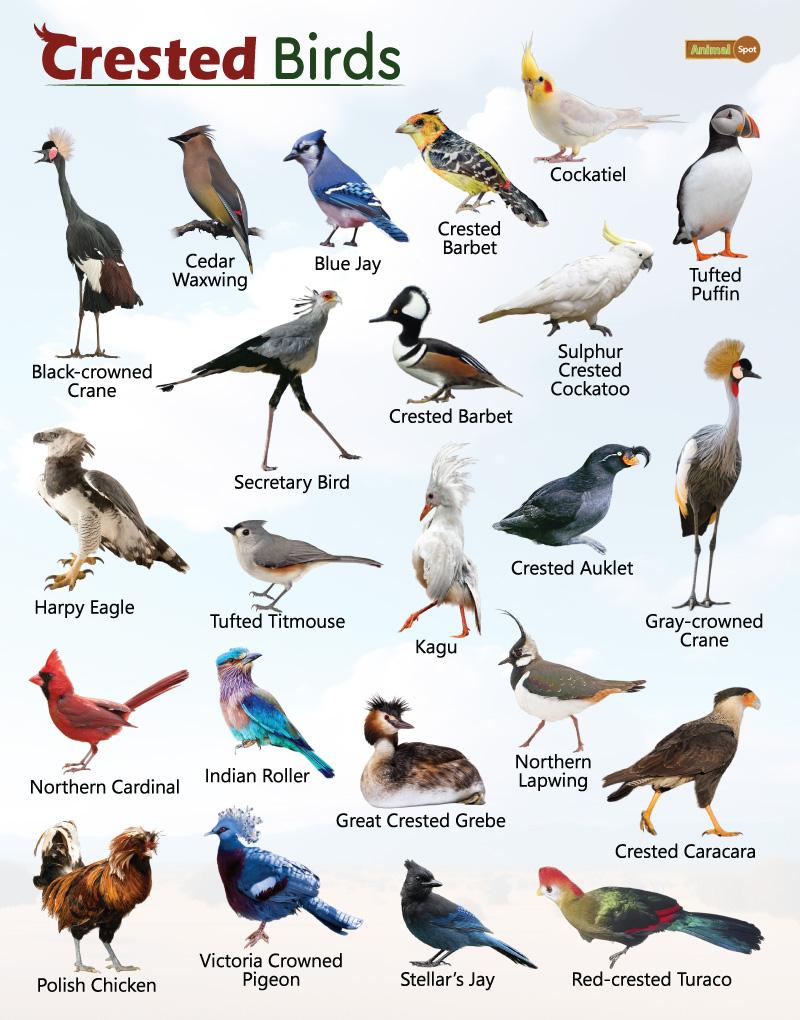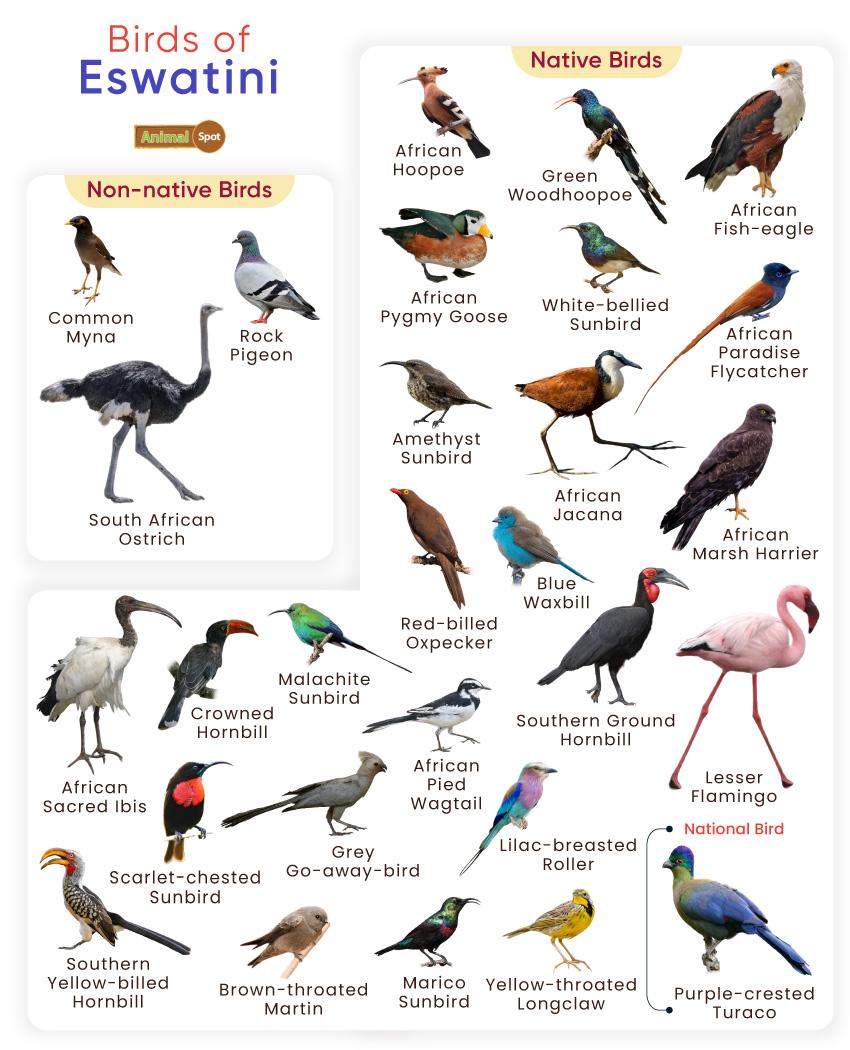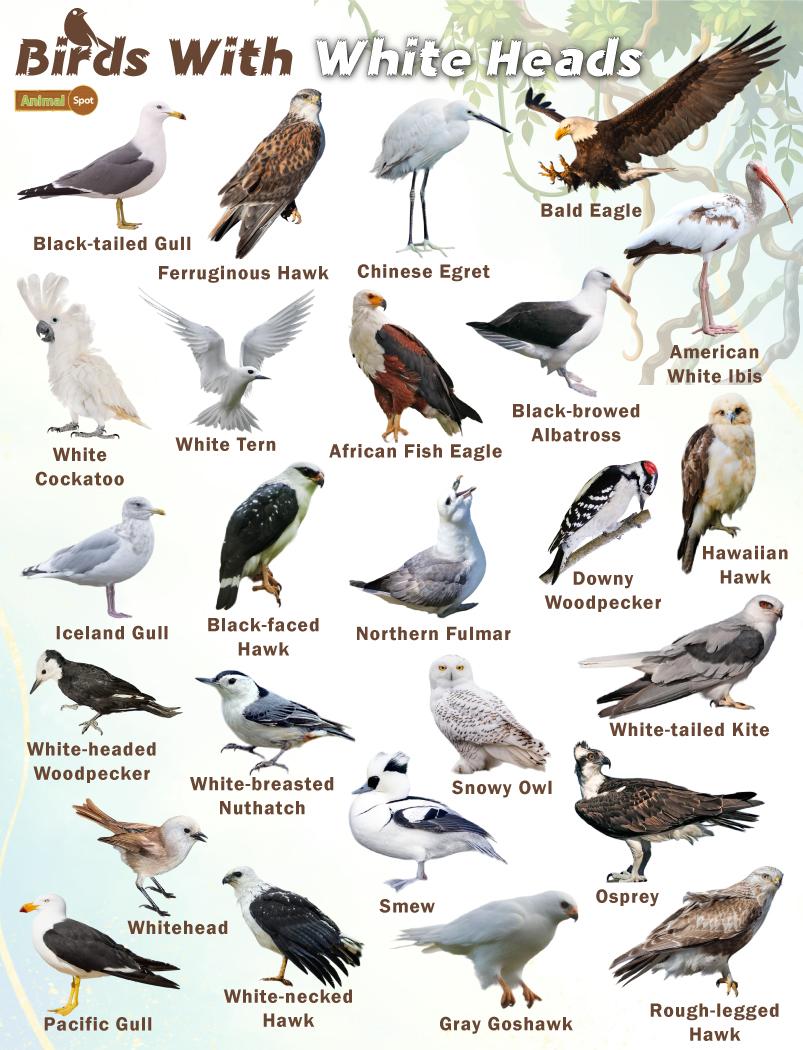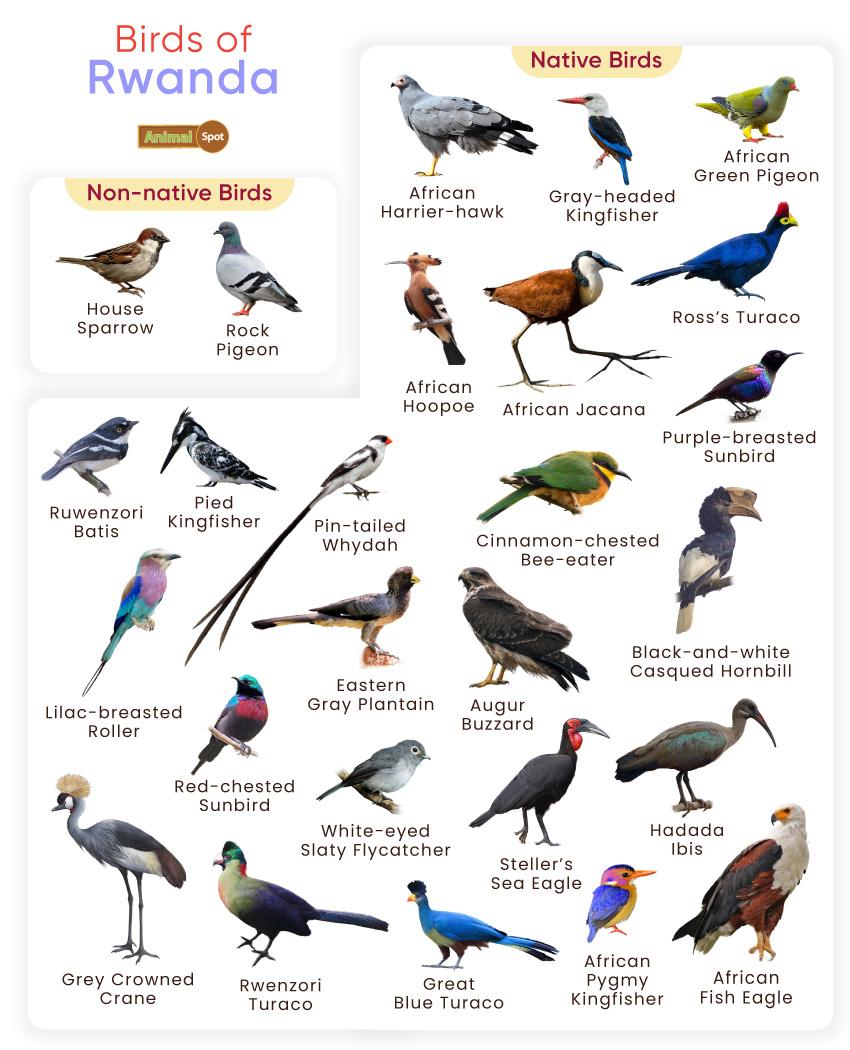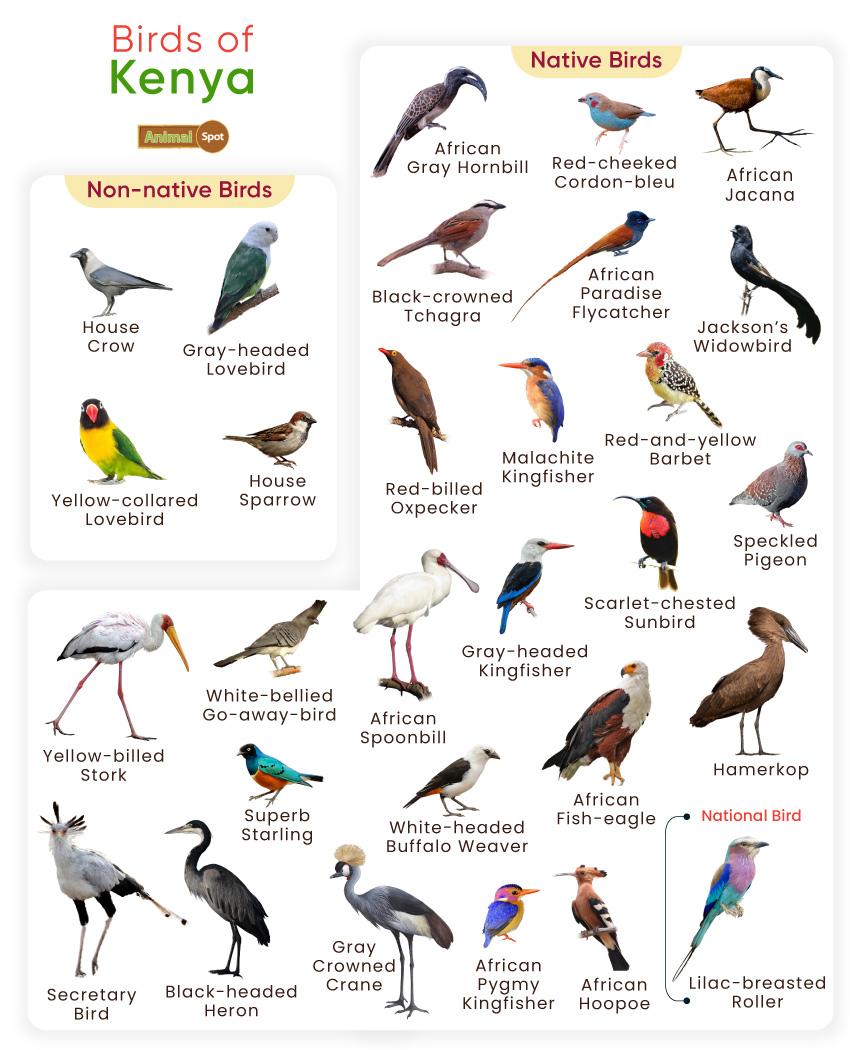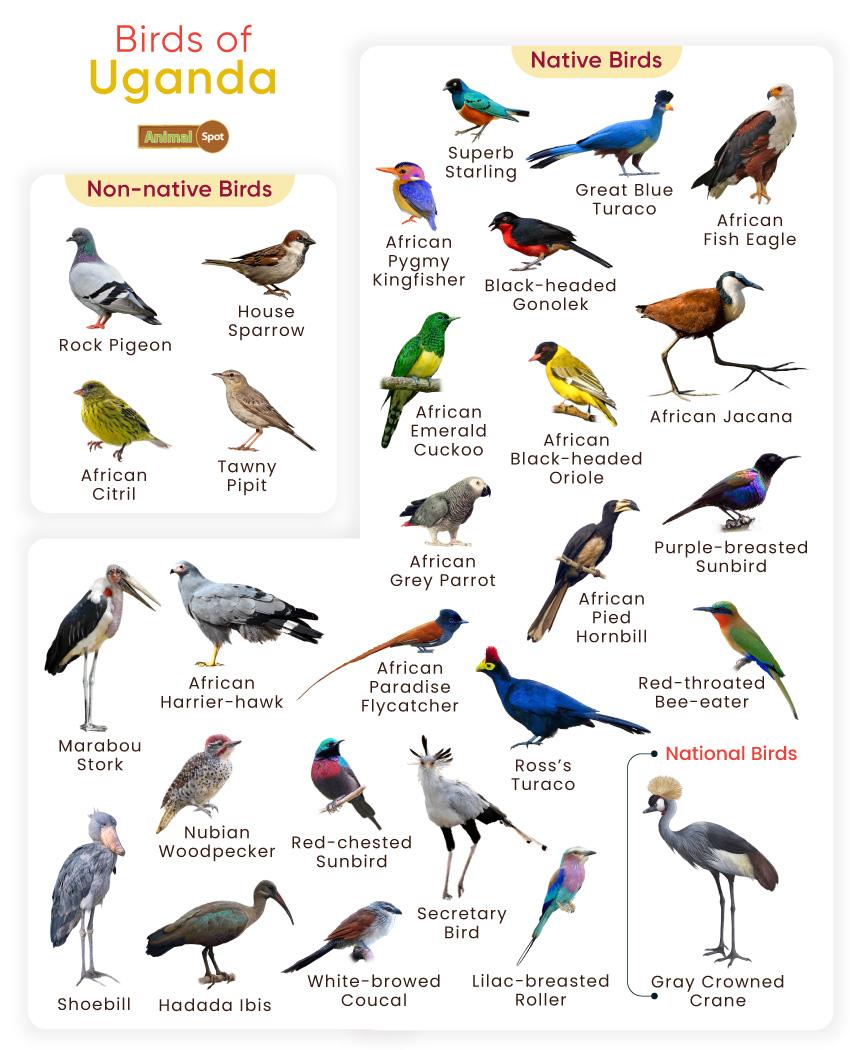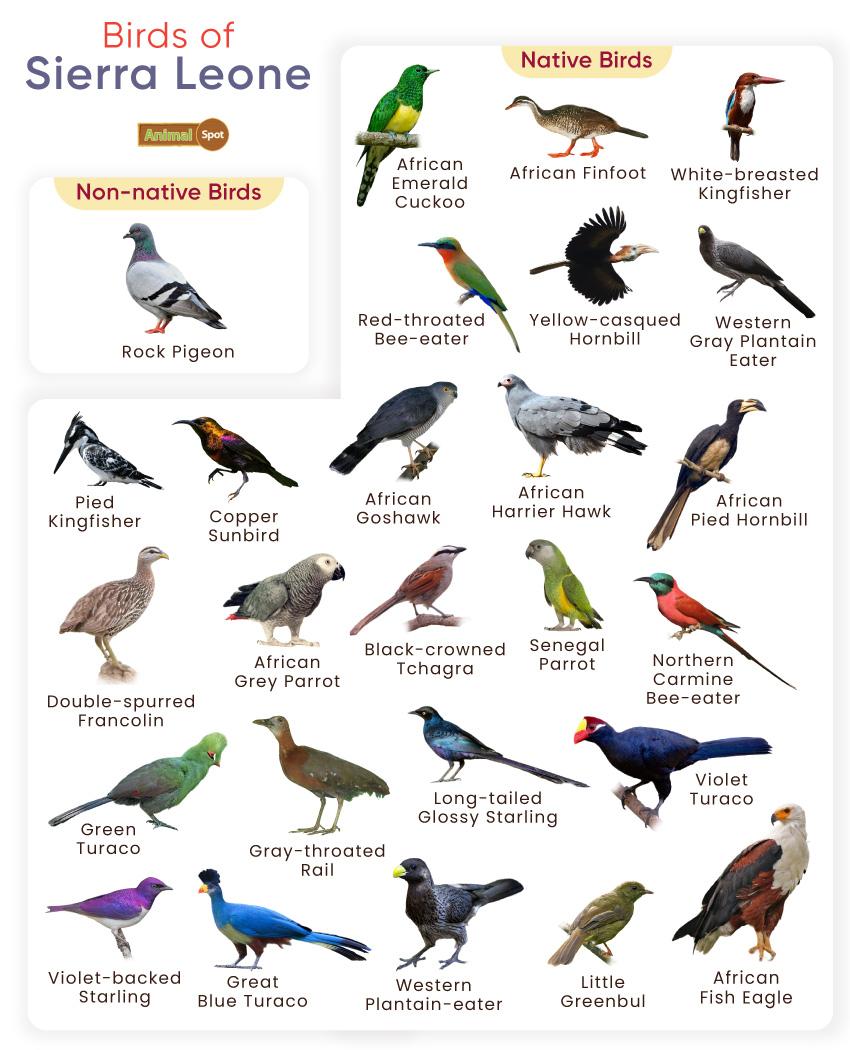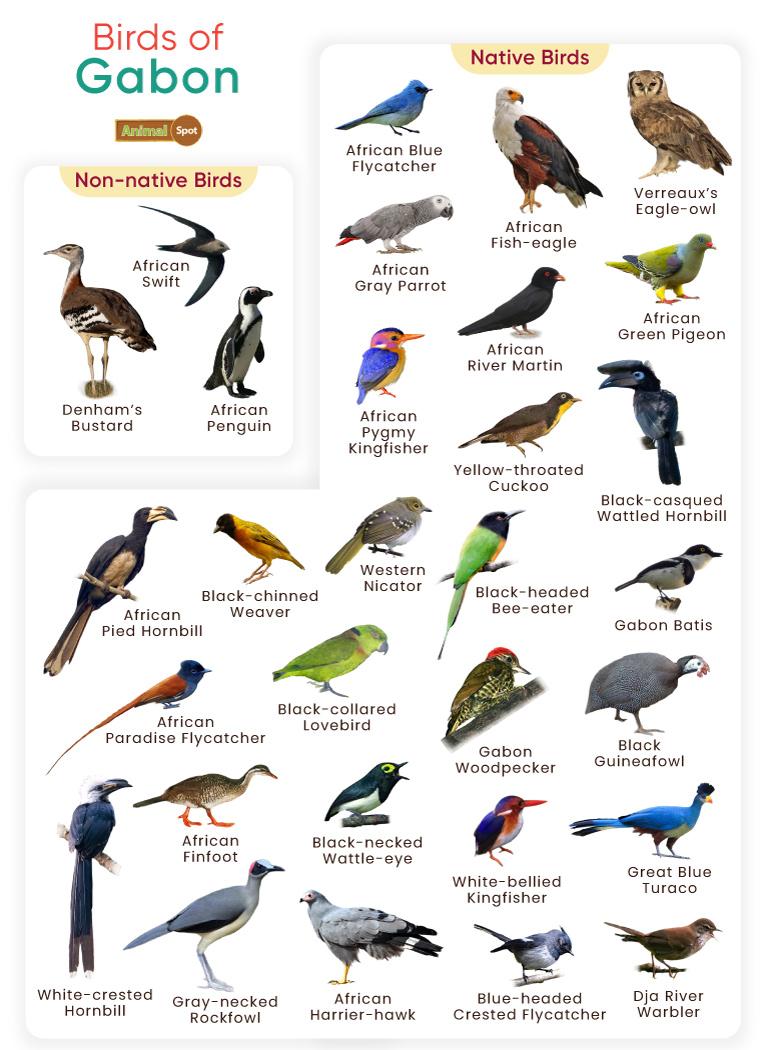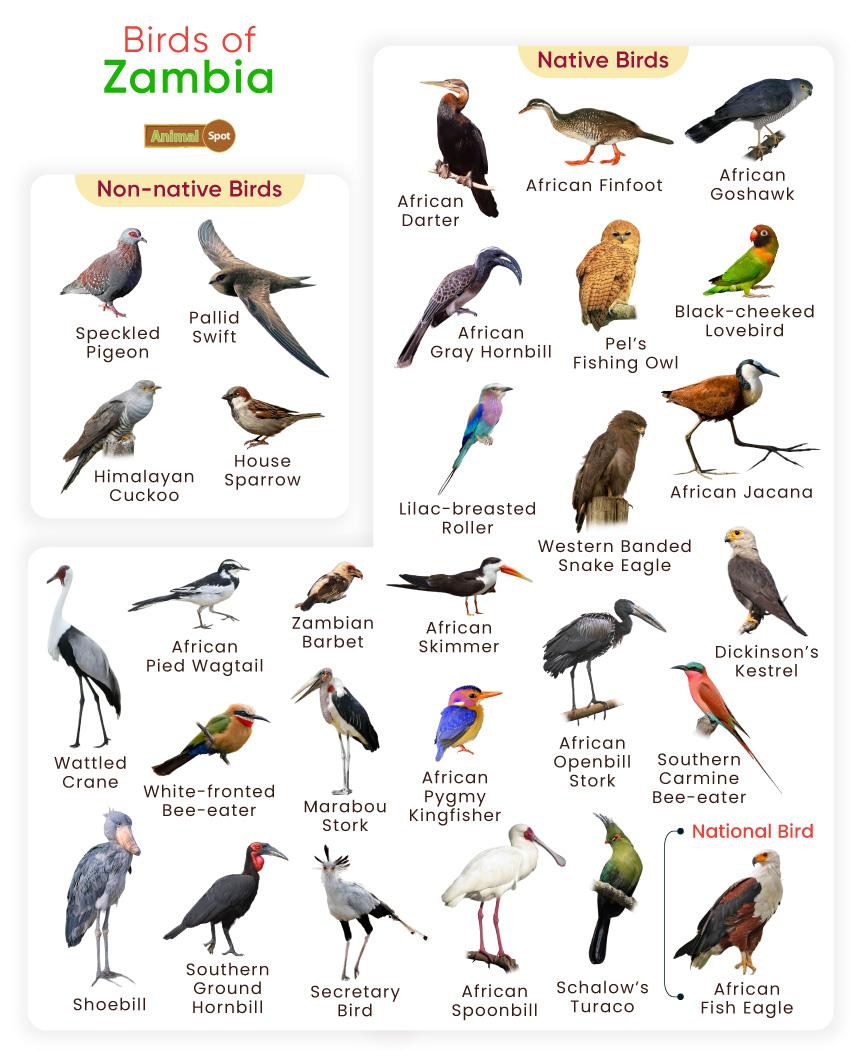Several species of birds have unique feathers on the top of their heads called crests. Sometimes they can raise these feathers, giving them the appearance of wearing a crown, but not all can. For instance, cockatoos can raise or lower their crests, while crowned cranes have permanently raised feathers.
Regardless, these feathers add to the magnificence of these avian species and add to their overall beauty.
List of Birds That Have Crowns on Their Heads
- African Crane
- African Hoopoe
- Amazonian Royal Flycatcher
- Atlantic Royal Flycatcher
- Bannerman’s Turaco
- Bare-faced Go Away Bird
- Belted Kingfisher
- Black-crested Titmouse
- Black-crowned Crane
- Black-crowned Night Heron
- Black-throated Magpie-jay
- Blue Jay
- Bohemian Waxwing
- Bridled Titmouse
- Brown-crested Flycatcher
- California Quail
- Cedar Waxwing
- Cockatiel
- Crested Auklet
- Crested Barbet
- Crested Caracara
- Crested Duck
- Crested Kingfisher
- Crested Partridge
- Curl-crested Aracari
- Dalmatian Pelican
- Demoiselle Crane
- Double Crested Cormorant
- Dusky-capped Flycatcher
- Elegant Tern
- Eurasian Hoopoe
- Fischer’s Turaco
- Gambel’s Quail
- Golden-crowned Kinglet
- Golden-crowned Sparrow
- Golden Pheasant
- Gray Catbird
- Gray-crowned Crane
- Great Blue Heron
- Great Blue Turaco
- Great Crested Flycatcher
- Great Crested Grebe
- Great Curassow
- Greater Crested Tern
- Greater Roadrunner
- Green Turaco
- Guianan Cock-of-the-rock
- Guinea Turaco
- Harpy Eagle
- Harris’s Sparrow
- Hartlaub’s Turaco
- Himalayan Monal
- Hooded Merganser
- Indian Peafowl
- Indian Roller
- Juniper Titmouse
- Kagu
- Knysna Turaco
- Livingstone’s Turaco
- Madagascar Hoopoe
- Major Mitchell’s Cockatoo
- Mandarin Duck
- Northern Cardinal
- Northern Lapwing
- Northern Royal Flycatcher
- Oak Titmouse
- Orange-crowned Warbler
- Pacific Royal Flycatcher
- Palm Cockatoo
- Phainopepla
- Pileated Woodpecker
- Pink Cockatoo
- Polish Chicken
- Prince Ruspoli’s Turaco
- Pyrrhuloxia
- Red-breasted Merganser
- Red-crested Cardinal
- Red-crested Turaco
- Red-faced Cormorant
- Red-legged Seriema
- Red-vented Bulbul
- Red-whiskered Bulbul
- Ringed Kingfisher
- Rock Hopper Penguin
- Ross’s Turaco
- Royal Flycatcher
- Royal Tern
- Ruby-crowned Kinglet
- Ruffed Grouse
- Rufous-collared Sparrow
- Rufous-crested-coquette
- Rufous-crowned Sparrow
- Rwenzori Turaco
- Sandwich Tern
- Scaled Quail
- Schalow’s Turaco
- Scheepmaker’s Crowned Pigeon
- Sclater’s Crowned Pigeon
- Secretary Bird
- Silver Pheasant
- Smew
- Stellar’s Jay
- Sulphur Crested Cockatoo
- Tufted Duck
- Tufted Flycatcher
- Tufted Puffin
- Tufted Titmouse
- Vermilion Flycatcher
- Victoria Crowned Pigeon
- Violet Turaco
- Western Crowned Pigeon
- White-bellied Go-away-bird
- White Cockatoo
- White-crested helmetshrike
- White-crested Laughingthrush
- White-crowned Sparrow
- White-throated Sparrow
- Yellow-crowned Night Heron
- Yellow-crown Warbler
Why Do Some Birds Have Crests on Their Heads?
Some common reasons for the presence of crests in birds include:
- To Display and Communicate – During the breeding season, male birds often use their colorful head feathers to attract mates and establish dominance over their rivals. They may puff up their crests or distinctively display them to show off their fitness and attractiveness to potential mates.
- To Recognize Members of their Species – In dense bird communities where many avifaunae coexist, a species’ crest’s unique coloration or pattern allows them to recognize each other.
- To Establish a Social Hierarchy – Individual birds with large or bright crests on their heads often enjoy a dominant position in the social hierarchy of their group, either with a larger territory or a choice of mate.
- To Camouflage Themselves – Some birds use their crests to hide from predators or make them more efficient hunters.
- To Provide Insulation and Protection – The crest feathers protect the bird’s head from environmental factors like rain, cold weather, or excessive heat.

